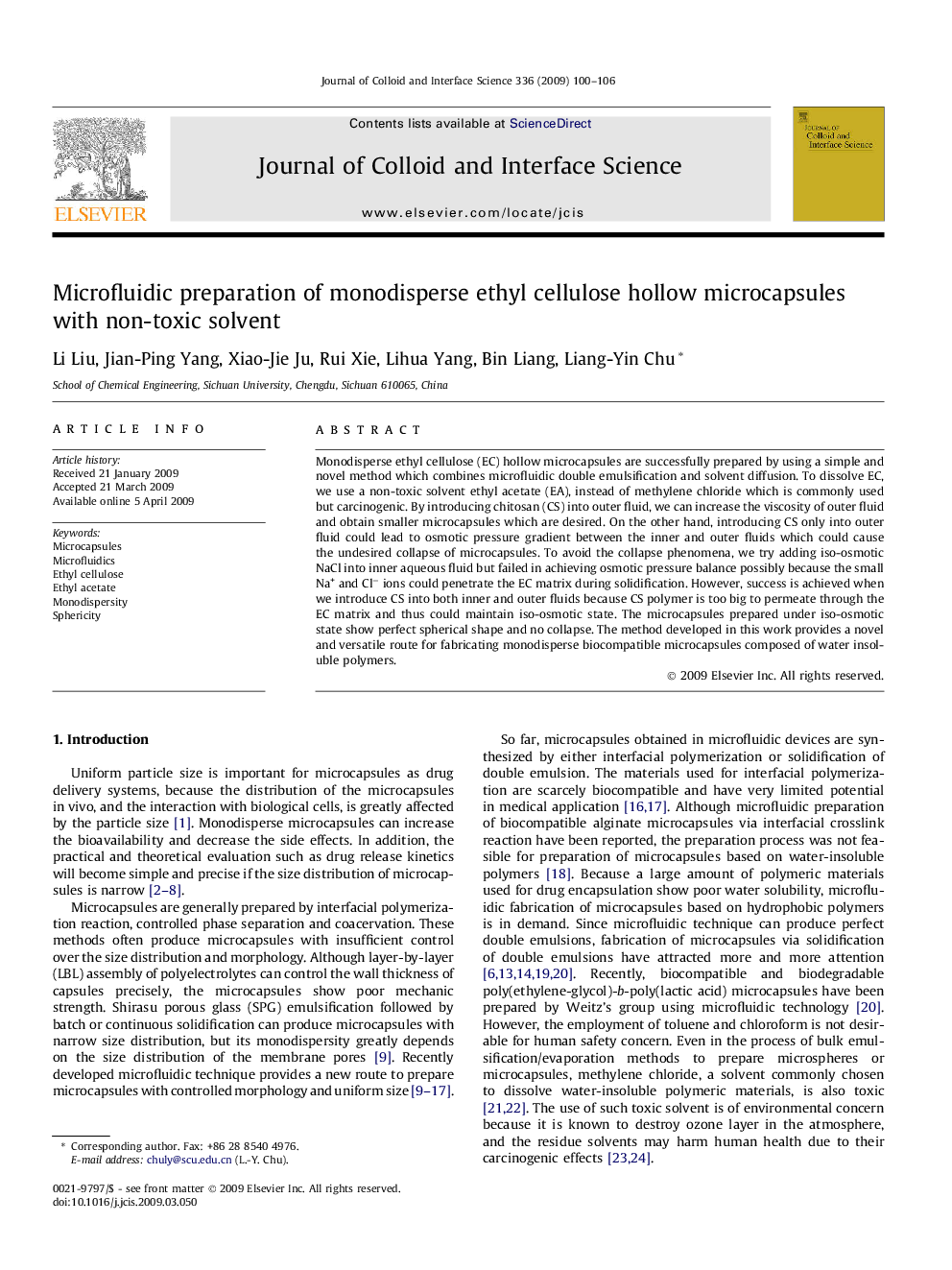| Article ID | Journal | Published Year | Pages | File Type |
|---|---|---|---|---|
| 610344 | Journal of Colloid and Interface Science | 2009 | 7 Pages |
Monodisperse ethyl cellulose (EC) hollow microcapsules are successfully prepared by using a simple and novel method which combines microfluidic double emulsification and solvent diffusion. To dissolve EC, we use a non-toxic solvent ethyl acetate (EA), instead of methylene chloride which is commonly used but carcinogenic. By introducing chitosan (CS) into outer fluid, we can increase the viscosity of outer fluid and obtain smaller microcapsules which are desired. On the other hand, introducing CS only into outer fluid could lead to osmotic pressure gradient between the inner and outer fluids which could cause the undesired collapse of microcapsules. To avoid the collapse phenomena, we try adding iso-osmotic NaCl into inner aqueous fluid but failed in achieving osmotic pressure balance possibly because the small Na+ and Cl− ions could penetrate the EC matrix during solidification. However, success is achieved when we introduce CS into both inner and outer fluids because CS polymer is too big to permeate through the EC matrix and thus could maintain iso-osmotic state. The microcapsules prepared under iso-osmotic state show perfect spherical shape and no collapse. The method developed in this work provides a novel and versatile route for fabricating monodisperse biocompatible microcapsules composed of water insoluble polymers.
Graphical abstractMonodisperse ethyl cellulose hollow microcapsules are prepared using non-toxic solvent via microfluidic double emulsification and solvent diffusion.Figure optionsDownload full-size imageDownload as PowerPoint slide
